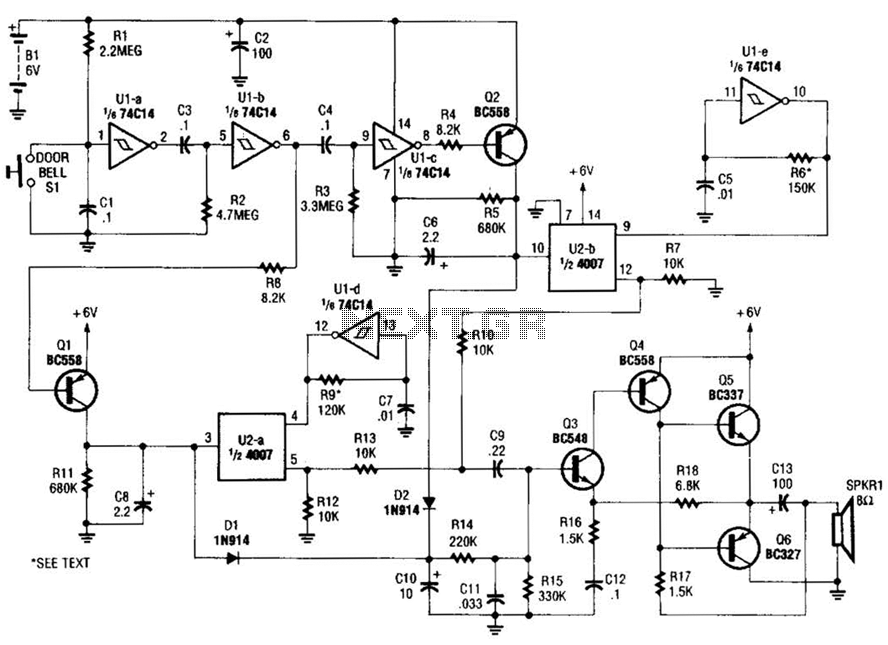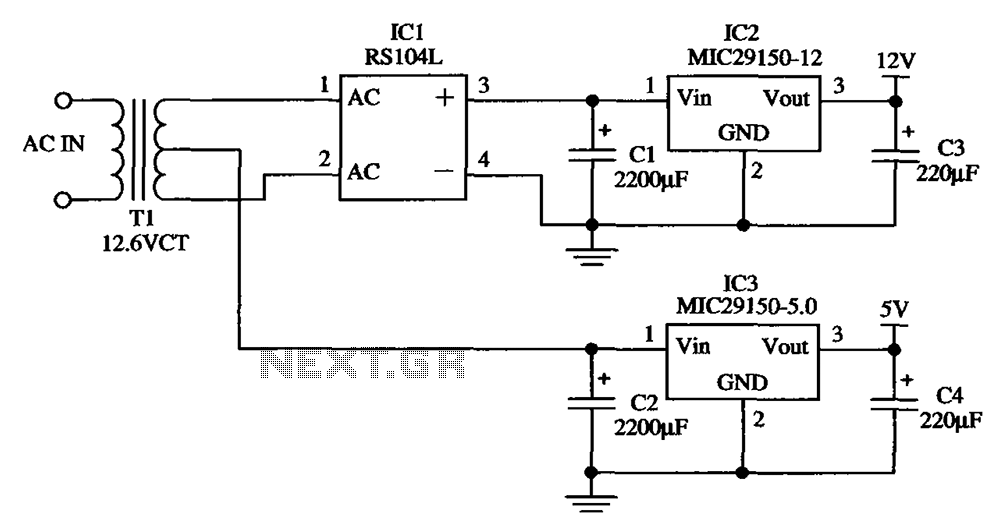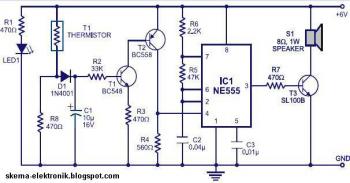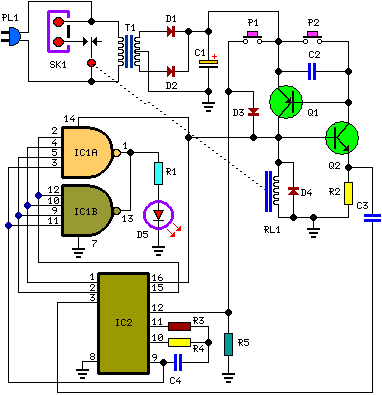
Electronic Doorbell Circuit

When the doorbell switch is pressed, two monostable stages are sequentially activated, applying bias to a pair of voltage-controlled resistor stages. These stages modulate the outputs from a pair of tone generators. The resulting signals are then fed to an audio amplifier and subsequently to the speaker.
The described circuit functions as a doorbell chime system, employing two monostable multivibrators that operate in a sequential manner. Upon activation of the doorbell switch, the first monostable stage is triggered, producing a short pulse that initiates the operation of the second stage after a predetermined delay. This sequence creates a distinct pattern of activation that is essential for generating a unique audio signal.
The voltage-controlled resistors (VCRs) play a critical role in shaping the audio output. By adjusting the resistance based on the control voltage received from the monostable stages, the VCRs allow for nuanced modulation of the tone generators' outputs. The tone generators are typically configured to produce specific frequencies that correspond to the desired chime sound.
The audio signals produced by the tone generators are then routed to an audio amplifier, which boosts the signal strength to drive a speaker effectively. The amplifier ensures that the sound produced is loud enough to be heard clearly at a distance. The final output is delivered through the speaker, providing an audible indication of someone at the door.
This schematic illustrates a straightforward yet effective approach to designing a doorbell chime system, integrating sequential logic with audio modulation techniques to create a pleasant and functional alerting mechanism. When the doorbell switch is pressed, the two monostable stages are activated in sequence, applying bias to a pair of voltage-controlled resistor stages. These then modulate the outputs from a pair of tone generators. The resulting signals are fed to an audio amplifier, then to the speaker.
The described circuit functions as a doorbell chime system, employing two monostable multivibrators that operate in a sequential manner. Upon activation of the doorbell switch, the first monostable stage is triggered, producing a short pulse that initiates the operation of the second stage after a predetermined delay. This sequence creates a distinct pattern of activation that is essential for generating a unique audio signal.
The voltage-controlled resistors (VCRs) play a critical role in shaping the audio output. By adjusting the resistance based on the control voltage received from the monostable stages, the VCRs allow for nuanced modulation of the tone generators' outputs. The tone generators are typically configured to produce specific frequencies that correspond to the desired chime sound.
The audio signals produced by the tone generators are then routed to an audio amplifier, which boosts the signal strength to drive a speaker effectively. The amplifier ensures that the sound produced is loud enough to be heard clearly at a distance. The final output is delivered through the speaker, providing an audible indication of someone at the door.
This schematic illustrates a straightforward yet effective approach to designing a doorbell chime system, integrating sequential logic with audio modulation techniques to create a pleasant and functional alerting mechanism. When the doorbell switch is pressed, the two monostable stages are activated in sequence, applying bias to a pair of voltage-controlled resistor stages. These then modulate the outputs from a pair of tone generators. The resulting signals are fed to an audio amplifier, then to the speaker.





